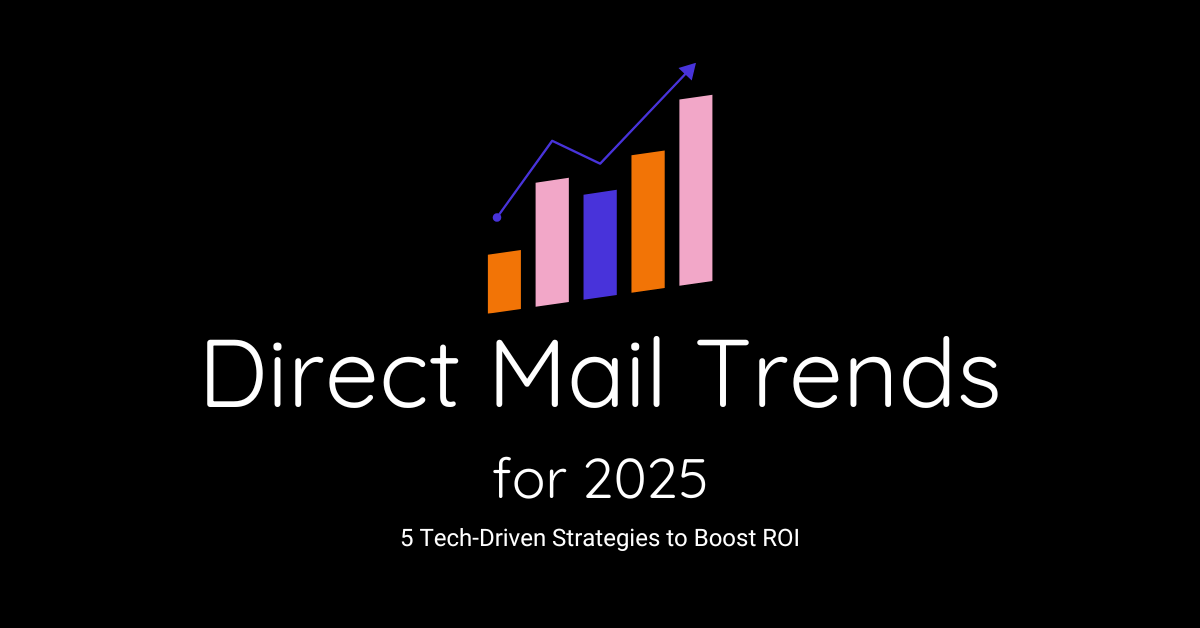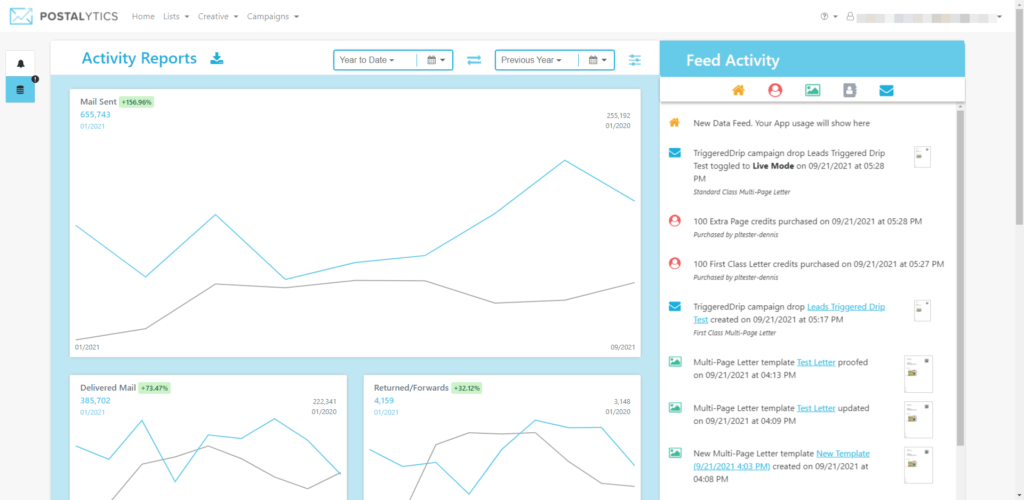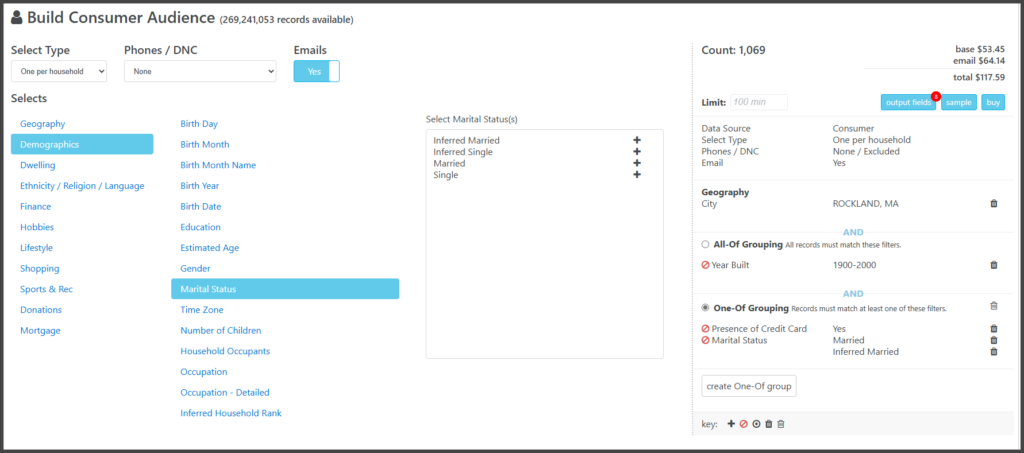In an increasingly digital world, direct mail continues to evolve and adapt, proving itself as a powerful marketing channel when enhanced by modern technology. As we look ahead to 2025, several emerging trends are reshaping how marketers approach direct mail campaigns, making them more efficient, measurable, and integrated with digital marketing efforts than ever before.

This comprehensive guide explores the five most important direct mail trends that marketing professionals should focus on in 2025 to maximize their campaign performance and return on investment.
1. Campaign Dashboards: Real-Time Visibility into Direct Mail Performance
Gone are the days of waiting weeks or months to understand how your direct mail campaigns are performing. In 2025, sophisticated campaign dashboards are becoming the standard for modern direct mail marketing. These powerful tools provide real-time insights into your campaigns, allowing marketers to track key metrics and make data-driven decisions quickly.
Modern campaign dashboards offer features such as:
- Delivery tracking and confirmation
- Response rate monitoring
- Cost per acquisition analysis
- A/B testing results

By leveraging these advanced dashboard capabilities, marketers can optimize their campaigns on the fly and demonstrate clear ROI to stakeholders. The ability to visualize and analyze campaign data in real-time is transforming direct mail from a “spray and pray” approach to a precise, measurable marketing channel.
2. Audience Building Tools: Precision Targeting for Maximum Impact
As data collection and analysis capabilities continue to advance, 2025 is seeing a revolution in how marketers build and segment their direct mail audiences. Next-generation audience building tools are enabling unprecedented levels of targeting precision, helping marketers reach the right prospects with the right message at the right time.

Key Benefits of Audience Building Tools:
- Improved Targeting: Reach high-value prospects by analyzing purchasing behavior, location, and interests.
- Reduced Waste: Eliminate irrelevant recipients, minimizing costs and maximizing impact.
- Dynamic Segmentation: Continuously refine and update your audience lists based on new data.
How to Implement Audience Building Tools:
- Use tools like Postalytics to integrate data from your CRM and other marketing platforms.
- Leverage predictive analytics to forecast which segments are most likely to respond.
- Continuously test and refine your audience segments to enhance campaign effectiveness.
3. Triggered Campaigns from CRM: Automating Personalized Direct Mail
One of the most exciting developments in direct mail marketing for 2025 is the widespread adoption of CRM-triggered campaigns. This automation capability allows marketers to set up direct mail pieces that are automatically sent based on specific customer actions or milestones within their CRM system.

Advantages of Triggered Campaigns:
- Enhanced Personalization: Deliver relevant content tailored to individual customer journeys.
- Higher Engagement Rates: Reach customers when they’re most likely to act.
- Increased Efficiency: Reduce manual processes by automating repetitive tasks.
Examples of Triggered Campaigns:
- Welcome Mailers: Send a personalized welcome letter to new customers after their first purchase.
- Reactivation Campaigns: Re-engage dormant customers with exclusive offers or reminders.
- Event-Based Campaigns: Celebrate customer birthdays or anniversaries with a special promotion.
How to Get Started:
- Ensure your CRM is fully integrated with your direct mail platform.
- Map out your customer journey to identify key trigger points.
- Develop a library of templates and messages for different triggers.
4. Suppression Lists: Smart Targeting Through Strategic Exclusion
In 2025, automated suppression list management is becoming a crucial element of successful direct mail campaigns. These tools help marketers avoid sending redundant or inappropriate mailings to certain addresses, improving campaign efficiency and reducing waste.

Modern suppression list capabilities include:
- Recently contacted customer exclusion
- Competitive address blocking
- Do-not-mail registry compliance
- Duplicate address elimination
- Bad address removal
- Customer preference management
By implementing robust suppression list management, marketers can avoid common pitfalls like sending multiple pieces to the same household or mailing to invalid addresses. This not only reduces costs but also helps maintain brand reputation by respecting customer preferences and avoiding waste.
5. Direct Mail Credits: Simplifying Budget Management
Direct mail credits are an emerging trend that simplifies budgeting for direct mail campaigns. These prepaid credits allow marketers to allocate a set budget to their campaigns, making it easier to manage costs and avoid overspending. Direct mail platforms offering this feature provide transparency and flexibility, helping you stay on track financially.

Why Direct Mail Credits Are Valuable:
- Budget Control: Set clear limits for your campaign spend without compromising reach.
- Simplified Billing: Reduce administrative overhead by consolidating payments.
- Scalability: Easily scale campaigns up or down based on performance and available credits.
How to Use Direct Mail Credits Effectively:
- Plan your campaigns well in advance to estimate the required budget.
- Monitor credit usage through your campaign dashboard to avoid overages.
- Take advantage of volume discounts by purchasing credits in bulk.
Implementing These Trends in Your Marketing Strategy
To take advantage of these emerging trends, marketers should:
- Evaluate their current direct mail technology stack and identify gaps
- Develop a roadmap for implementing new tools and capabilities
- Train team members on new technologies and best practices
- Start with pilot programs to test new approaches
- Measure results and optimize based on data
- Scale successful initiatives across the organization
Looking Ahead
As we move through 2025, the integration of technology with direct mail marketing continues to create new opportunities for improved efficiency and ROI. By embracing these trends and investing in the right tools and capabilities, marketers can transform their direct mail campaigns into data-driven, automated, and highly effective marketing channels.
The key to success lies in choosing the right combination of these trends to match your organization’s specific needs and goals. Start by assessing your current capabilities and identifying which of these trends could have the most significant impact on your marketing objectives.
Remember that while technology is transforming direct mail marketing, the fundamental principles of good marketing still apply: know your audience, deliver value, and maintain consistent communication with your customers.
By staying ahead of these trends and implementing them strategically, marketers can position themselves for success in the evolving landscape of direct mail marketing in 2025 and beyond.
About the Author

Dennis Kelly
Dennis Kelly is CEO and co-founder of Postalytics, the leading direct mail automation platform for marketers to build, deploy and manage direct mail marketing campaigns. Postalytics is Dennis’ 6th startup. He has been involved in starting and growing early-stage technology ventures for over 30 years and has held senior management roles at a diverse set of large technology firms including Computer Associates, Palm Inc. and Achieve Healthcare Information Systems.
